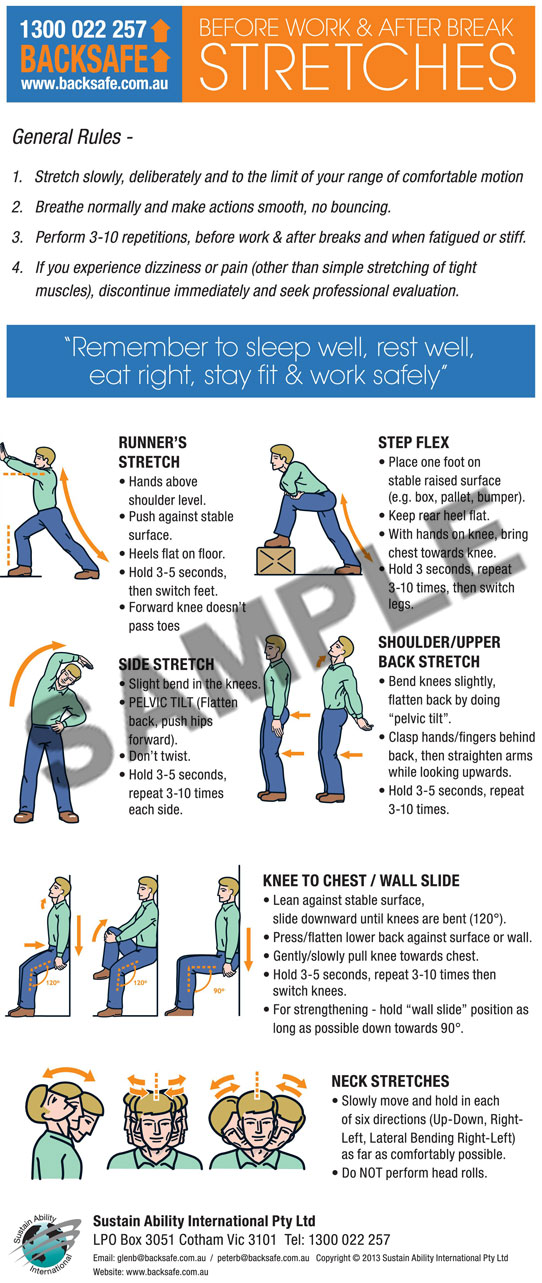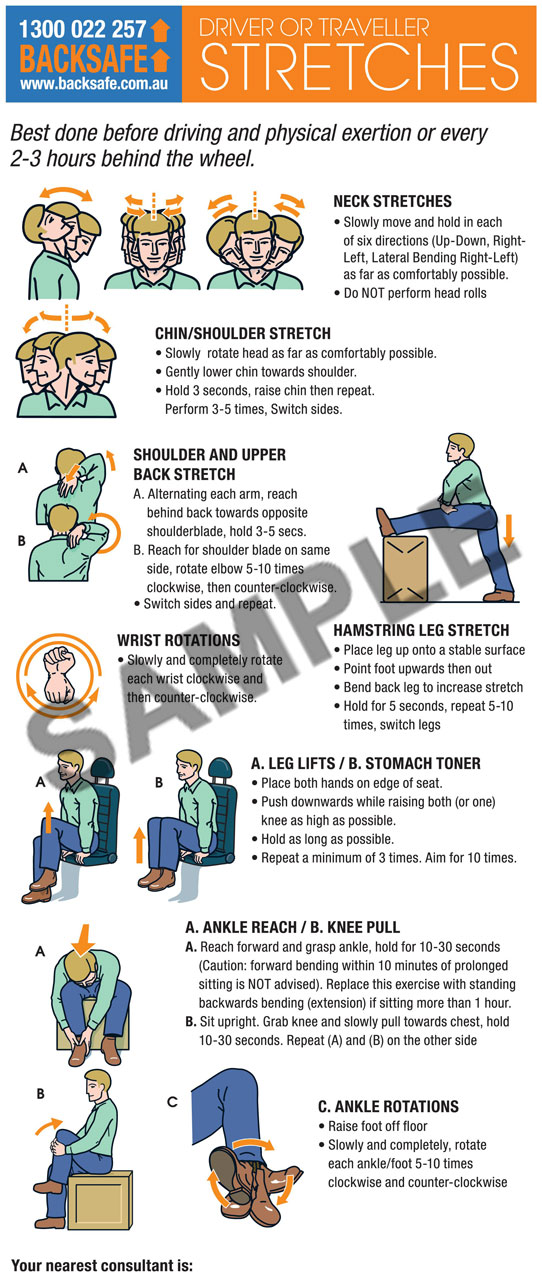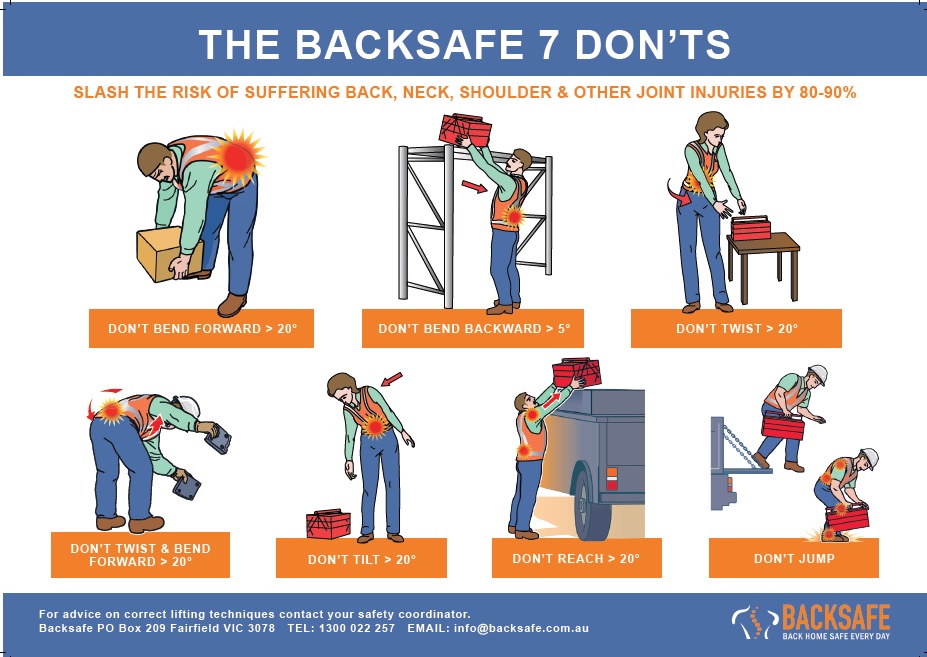Truck driving can be a demanding profession that requires long hours on the road. As a truck driver, it’s important to prioritise your health and well-being to ensure you can perform your job effectively.
Chain of responsibility laws need to be followed and must include warm-ups and stretches as part of the driver’s day.
One way to achieve this is by incorporating stretching into your daily routine. Stretches for truck drivers not only helps relieve muscle tension, but it also improves flexibility and reduces the risk of injuries resulting from the sedentary nature of the work activity.
In this article, we will explore the importance of stretching for truck drivers, essential stretching techniques, ways to incorporate stretching into your daily routine, safety precautions, and the long-term benefits of regular stretching.
Understanding the Importance of Stretching for Truck Drivers
Driving for extended periods of time can take a toll on your body. Sitting in a fixed position for hours on end can lead to muscle stiffness and fatigue. This can not only affect your physical well-being but also your mental state.
Incorporating stretching into your daily routine can help counteract the negative effects of long hours on the road and promote overall health and well-being.
Furthermore, prolonged sitting can also contribute to poor circulation and increased risk of developing conditions such as deep vein thrombosis (DVT).
Stretching exercises can help stimulate blood flow and prevent blood clots from forming, reducing the likelihood of DVT and other circulatory issues associated with long periods of inactivity.
The Impact of Long Hours on the Road
Truck drivers often spend countless hours sitting behind the wheel, which can result in poor posture if the seat is not setup properly and increased muscle tension. This can lead to discomfort, pain, and even long-term health issues if left unaddressed.
Driver set setup should be close to upright and with a lumbar support but capable of slight variation for long haul drivers. Fixed positions need to be varied. The adage should be “move, move, move” as a driver.
Stretching regularly can help alleviate these issues by improving blood circulation, increasing range of motion, and relieving muscle tension.
Moreover, the repetitive nature of driving can cause certain muscle groups to become tight and overused, leading to imbalances in the body. Walking and brief stretching helps to rebalance these muscles, reducing the risk of injuries and enhancing overall physical performance while on the road.
Download a copy of the Backsafe Core Strengthening Exercise Booklet to learn more ways to strengthen your core and entire body.
How Stretching Contributes to Overall Health
In addition to reducing muscle tension, stretching plays a vital role in maintaining overall health. It helps increase flexibility, which is essential for performing daily tasks with ease. Stretching also promotes better posture and spinal alignment, which can prevent back and neck pain often experienced by truck drivers.
Furthermore, incorporating stretching into your routine can also have a positive impact on your mental well-being. The act of stretching releases endorphins, also known as “feel-good” hormones, which can help reduce stress and improve your mood.
This can be especially beneficial for truck drivers who face long hours on the road and the associated mental strain of navigating traffic and meeting delivery deadlines.
Essential Stretches for Truck Drivers
Now that we understand the importance of stretching, let’s explore some essential stretching techniques specifically designed for truck drivers. It’s good to get out and stretch every two to three hours to ensure that your body doesn’t get stiff from being in a relatively fixed posture. Occasionally incorporating stretches while inside the truck’s cabin is also a good idea to keep the blood circulating. See the Backsafe Driver stretches trifold card shown here:

Upper Body Stretches
To combat the strain on your upper body from steering and shifting gears, incorporate upper body stretches into your routine. These can include shoulder rolls, chest openers, and neck stretches.
These stretches help release tension and improve mobility in your neck, shoulders, and back

Lower Body Stretches
Driving for long hours can leave your lower body feeling stiff and fatigued. To relieve discomfort in your legs, hips, and lower back, focus on lower body stretches. Ankle circles, hamstring stretches, and hip flexor stretches are great exercises to include in your routine.
Pushing against the side of your truck to perform some calf stretches are also a great stretch to incorporate.
Full Body Stretches
To ensure your entire body benefits from stretching, incorporate full body stretches. Moves like the standing forward bend, and side stretches (within 20 degrees) can help alleviate muscle tension and increase flexibility throughout your entire body.
On top of these various stretches, make sure you take a walk around when having your breaks. This increases blood flow throughout your body and also helps you revive if you’re feeling tired.
Incorporating Stretching into Your Daily Routine
Now that you’re familiar with essential stretches for truck drivers, it’s essential to find ways to incorporate stretching into your daily routine.
Finding the Right Time to Stretch
While on the road, finding the perfect time to stretch may seem challenging. However, building a routine around breaks, rest stops, and downtime will ensure you can incorporate stretching into your day. Aim to stretch at least every two to three hours to prevent muscle stiffness and promote circulation.
Creating a Consistent Stretching Schedule
Consistency is key when it comes to reaping the benefits of stretching. Create a stretching schedule that works for you and stick to it.
Incorporating stretching into your daily routine will soon become a natural habit. Whether it’s before starting your journey, during rest stops, or before bed, find the time that works best for you.
Safety Precautions While Stretching
While stretching offers numerous benefits, it’s essential to practice it safely to avoid any injuries. Stretching in the wrong manner or angle can have further negative effects than positive.
Ensure to not exceed a 20 degree bend forward, 20 degree bend sideways, no twisting greater than 20 degrees with feet in a fixed position, and don’t bend backwards greater than 5 degrees as per the National Code of Practice for Hazardous Manual Handling.
And most importantly always stretch on the most protected side of the truck.
Avoiding Injuries During Stretching
To prevent injuries, remember to stretch gently and avoid overstretching. Each stretch should be held for 15-30 seconds without bouncing and performed 3-5 times.
It’s important to be aware of your body and not force any movements that cause pain or discomfort. If you have any pre-existing injuries or conditions, consult with a healthcare professional before implementing a stretching routine.
Knowing Your Body’s Limitations
Everyone’s body is unique, and what works for one person may not work for another. It’s important to understand your body’s limitations and adjust your stretching routine accordingly. If a particular stretch feels uncomfortable or causes pain, modify it or seek guidance from a professional.
The Long-Term Benefits of Regular Stretching
Committing to a regular stretching routine as a truck driver can bring about numerous benefits in the long run.
Improved Physical Performance
Regular stretching helps improve flexibility, range of motion, and strengthens muscles. This can greatly enhance your physical performance while on the road. Increased flexibility and strength allow for better control of the vehicle and reduced risk of injuries.
Enhanced Mental Well-being
Stretching not only benefits the body but also the mind. Taking a few moments to stretch can help alleviate stress, improve focus, and enhance mental clarity.
By incorporating stretching into your routine, you can create a positive and soothing environment during long hours behind the wheel.
Prevention of Health Issues Related to a Sedentary Lifestyle
A sedentary lifestyle, which often accompanies truck driving, can lead to various health issues. Regular stretching helps combat the negative effects of prolonged sitting and reduces the risk of conditions such as lower back pain, muscle imbalances, and poor posture.
The benefits of stretches for truck drivers
As a truck driver, your health should be a top priority. By incorporating stretching into your daily routine, you can improve your overall well-being and reduce the negative effects of long hours on the road.
Remember to start with essential stretches for the upper and lower body and gradually incorporate full-body stretches. Find the right time to stretch and create a consistent schedule that works for you.
Practice stretching safely and be mindful of your body’s limitations. In the long run, regular stretching will lead to improved physical performance, enhanced mental well-being, and prevention of health issues related to a sedentary lifestyle.
Not only does stretching help your driving abilities, but if your job involves manual handling, stretching has far greater benefits. When manual handling after long periods on the road, it’s essential that your body is loose and ready to perform lifts and other manual handling tasks to avoid injury.
Start stretching today and reap the benefits for years to come!
Visit our Backsafe Resources page to order purchase copies of our laminated tri-fold stretch card as shown on this page.




